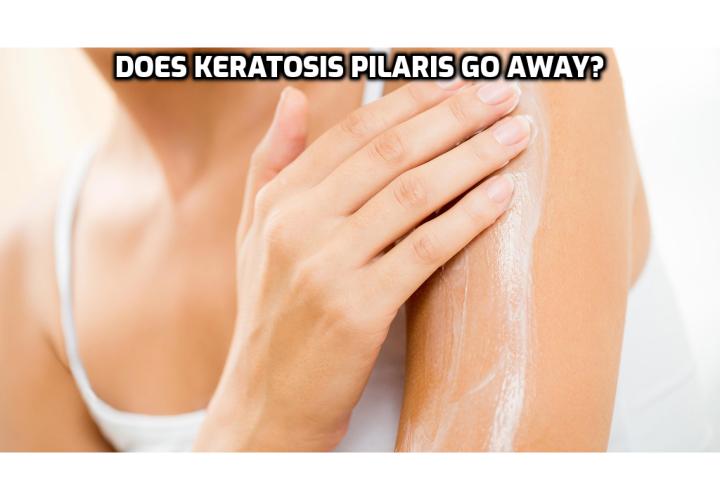Keratosis
Pilaris Treatment – Is Keratosis Pilaris Contagious?
Individuals
with obvious skin conditions like keratosis pilaris are often concerned that their
problem could be spread to other people with whom they come into contact.
Because their rough, bumpy skin is visually apparent and cosmetically
unappealing, patients and those around them may believe that keratosis pilaris is contagious. This, however, is
not the case. Keratosis pilaris is a genetic disorder and is not
transmitted to others by touch or by proximity.
Keratosis pilaris is caused by the buildup of keratin,
a protective skin protein. It is not the result of any bacteria, virus, fungus,
or other transmittable source of origin. The continual buildup of keratin
results in the formation of small plugs in the opening of hair follicles, which
leads to blockage and creates tiny, raised, bumps that are grouped in patches
along the skin's surface.
This
creates the trademark spotty "chicken skin" appearance that is
associated with keratosis pilaris. Skin with hair growth is the
most commonly affected, such as the upper arm, thigh, and sometimes buttocks.
In rare cases, the face may be affected as well.
Although this disorder cannot be transmitted
through touch, some individuals are more prone to developing keratosis pilaris
than others. This is usually because of genetic influences, environmental
factors, and skin types.
For example, someone with chronically dry skin who lives in a
climate that experiences harsh winters is much more likely to experience
keratosis pilaris than someone who lives in a more-humid environment.
Additionally, someone who has a parent with the condition has a one in two
chance (50%) that he or she will inherit it.
That being said, anyone can develop keratosis pilaris. The
condition is most common in adolescents and in children ages 10 and under, but
it also affects approximately 40% of all adults as well. Symptoms often persist
for many years and can worsen or lessen periodically.
Ultimately, keratosis pilaris cannot be given to
someone else through contact or proximity, and you cannot catch it from another
person. If you think you may be at risk for keratosis pilaris or if you are
manifesting symptoms, see your doctor or a dermatologist. He or she can suggest
at-home remedies and may offer prescriptions to reduce inflammation and to
improve your skin's appearance.
Keratosis
Pilaris Treatment – Is Keratosis Pilaris Curable?
Keratosis pilaris is a common skin condition
that affects nearly 40% of all adults, in addition to approximately 50% to 80%
of all adolescents. Those who suffer from this problem experience small raised
bumps that occur in patches along the surface of their skin.
Despite claims to the contrary, clinical research indicates
that keratosis pilaris cannot be cured by any medical treatment or by any
lifestyle alteration.
Studies demonstrate that "no cure or
universally effective treatment is available" for keratosis pilaris. This
is likely due to the condition's genetic predisposition: because keratosis
pilaris is inherited from one or both of your parents, it is unlikely that any
treatment can negate the effects of such a strong genetic factor. Additionally,
its genetic influence also means that keratosis pilaris cannot be fully
prevented by any supplement, cream, or other treatment.
Sometimes, however, the condition clears on its own without
extensive treatment. This is often the case for patients who reach
mid-adulthood, as many people with keratosis pilaris report a dramatic
reduction in their symptoms by age 30. Other individuals may experience
lifelong keratosis pilaris with alternating periods of remission and
exacerbation.
Although keratosis pilaris is cosmetically
unpleasing, the condition is not medically serious and rarely poses any
significant health complications. Despite the strong genetic influence of
keratosis pilaris and the inability to prevent it, following a regular
skincare-treatment schedule can reduce your symptoms. Doctors advise using
non-soap cleansers, moisturizing regularly with a rich and gentle cream,
exfoliating with a gentle pad or cleansing cream, and taking warm showers
instead of hot baths.
Noticeable results can take weeks to months, so
be patient and consistent in your treatment plan. Symptoms can return if you
discontinue treatment: make sure you maintain a healthy skincare routine, even
after your bumpy skin disappears.
If your symptoms do not subside after implementing these
skincare options, see your doctor or a dermatologist. He or she can recommend
alternative methods to combat any residual inflammation or irritation, such as
prescription creams containing corticosteroids or retinol or procedures like
chemical peels or microdermabrasion.
Please note that these treatments are alternative therapies:
they may not be effective in all cases, and you may have to pay for them
out-of-pocket.
To get more ideas on keratosis pilaris treatment, watch this
video - HOW TO GET RID OF
CHICKEN SKIN (KERATOSIS PILARIS)| DR DRAY
This post is from the Keratosis Pilaris Remedy
program created by Alison White. Keratosis
Pilaris Remedy program is a step by step natural system through which
you can achieve a smoother and clearer skin in the shortest possible time. It
comes with a confidence-boosting skin cleanse that will help you in getting rid
of the Keratosis Pilaris condition.
You
will also get a recipe for a home-made face scrub with this product that is not
only very affordable to make, but also offer much more benefits as compared to
the expensive products available in the market.
The
author (Alison White) has also included her special Keratosis Pilaris diet
plan that includes some basic foods and make your skin to reborn and glow up
like your younger days.
Furthermore,
you will get the important information about the special ingredients that you
should consider while buying any skin product. These ingredients can be proved
very useful in eliminating the Keratosis Pilaris permanently.
To
find out more about this program, visit Keratosis
Pilaris Remedy Forever
